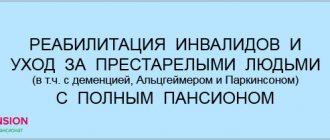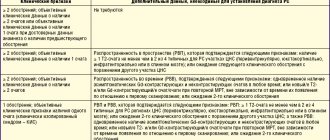Hyperthymesia - what is it?
Hyperthymesia is a phenomenal autobiographical memory. In this state, a person can remember and easily reproduce any information related to him. And it doesn’t matter whether she has any significance in his life or not.
The word “hyperthymesia” translated from Greek means “supermemory”. It seems that remembering absolutely everything about yourself is an interesting and unusual gift. However, people suffering from hyperthymesia do not agree with this statement. They have impaired functions of sorting and forgetting information entering the brain. This means that they remember even what they sometimes want to forget forever.
Interesting! There are no more than 20 people in the world diagnosed with hyperthymesia.
Hyperthymesia is often called eidetics. This is a mistake, since eidetism is a state in which a person remembers an image, object or phenomenon in great detail. He can mentally "see" them, even while they are absent. Hyperthymesia is characterized by memorizing exclusively autobiographical data.
This phenomenon is also often confused with hypermnesia. This is the ability to remember and reproduce all the events happening around, including autobiographical data. The difference is obvious. In addition, hypermnesia is considered a temporary condition. It is provoked by a state of passion, hippomania, hyperthymia.
Hyperthymesia and evolution in IT
I recently discovered the term “hyperthymesia” - the ability of a person to remember and reproduce an extremely high amount of information about her own life. Hyperthymesia is considered a memory disorder and significantly complicates a person’s life. Voluntarily or involuntarily focusing on the past, he stops paying attention to the present and forgets about the future. And the longer a person lives, the more past he has. The easier it is to slip into it, the more difficult it is to stay in the present.
Human capabilities are great, but limited. According to some estimates, the total memory capacity of our brain can reach 5 petabytes - that’s 5 thousand terabytes or 5 million gigabytes. Yes many. But not infinitely many. But you also need to process incoming/outgoing information (image, sound, smell, taste, tactile sensations, speech, motor skills), execute programmed programs (instincts) and create new ones (learning) - this is no longer just memory, but an information processing device ( CPU). Which is located in the same place as memory - in the human brain, and uses the same “hardware” resources (neurons and synapses). That is, it is unlikely that our memory capacity reaches these same 5 petabytes.
In its optimal mode of operation, memory should retain just enough information to make decisions that promote the survival of both the individual and the group to which the individual belongs (for social animals). A small amount of information in memory (lack of experience) can negatively affect the correct assessment of the situation, too much - on the speed of decision-making or even on the possibility of making the decision itself (in the case of conflicting input data).
Since the environment is changing all the time, those individuals who keep their memory (knowledge base) in an up-to-date state - corresponding to the current state of the environment - are in the best position. Outdated “rules” are thrown out, and new ones are added, allowing the individual to quickly make the right decisions. The process of forgetting information is an evolutionary necessity that allows one to exist in a changing environment, and the failure of this process is a pathology.
It was simpler for our ancestors; for them the world did not change at the same speed as it changes for us. This is especially true for information technology.
After all, what am I observing in the field of web applications? Firstly, the “browser war” gave rise to a bunch of alternative technologies (JavaScript, Java applets, ActiveX, Flash, Dart), secondly, web standards (HTML, CSS, Browser API) are the result of compromises between leading players, and developers are forced to support different implementations of functionality through the same polyfills. Various options for delivering JS code to the browser - CommonJS, AMD, CMD, UMD, ES6. The glorious past places a heavy burden on the shoulders of the modern web developer. And they also bear the no less glorious present - Angular, React, Vue, Svelte, Ember, ... Microservices in various programming languages - Go, Java, Ruby, Python, PHP, NodeJS, C#, ...
A modern developer must be somewhat hyperthymesic - remember a lot and know even more. But hyperthymesia is a pathology, a deviation from the norm. The consequence of hyperthymesia is a person’s inability to adequately assess the current situation due to increased time spent on analyzing available information. Our accumulated experience in development makes us cling to it. We are trying to adapt new features to older browsers, and having adapted, we take our developments with us to new browsers. We cannot abandon these developments of ours - after all, these are our investments (at least of time).
We do not forget what we have passed, we accumulate knowledge. Like a snowball - HTML, CSS, JS, ES6, TypeScript, Web 2.0, SPA, PWA, SEO, SSR, headless, microservices, AWS, Docker, Kubernetes, ... We can no longer just create an HTML page and put it on the Web, we must first think through all this and decide that pure HTML will be enough. How much easier it was to make such a decision when all we knew was HTML.
To evolve further, developers must learn to forget outdated information. They must limit the range of their professional interests, limit the stack of technologies used, and limit the areas of application of their skills. One person cannot cover everything that is now in IT - from the creation of microprocessors to the orchestration of microservices. Its capabilities are enough for a limited set of knowledge - either microprocessors or microservices:
Yes, a person can either study a smaller number of technologies more deeply, or a larger number of technologies, but superficially:
In any case, the capabilities of human intelligence are limited (at least by reading speed) and it cannot equally successfully develop both in breadth and depth. Especially in comparison with others like themselves, but who have chosen one direction. This, by the way, is where the legs of the “imposter syndrome” grow - you can always find someone who understands a certain topic better than you, or find a topic in which someone understands better than you.
Evolution in IT is now like surfing - you need to catch the “wave” and stay on it as long as it has enough energy:
Then take the “board” (intelligence) and look for a new “wave” (technology).
And then again, again and again...
Fortunately, the “waves” are only getting bigger.
Causes
It is impossible to say exactly what causes the development of hyperthymesia. Scientists have only been able to create a number of theories to explain its appearance. They are conventionally divided into biological and psychological.
According to research, people with hyperthymesia have an enlarged temporal lobe and caudate nucleus of the brain, which are responsible for semantic and episodic memory. These disorders are caused by the brain's inability to forget received information. It turns out that he can no longer divide everything that happens to a person into significant and insignificant events for him.
Symptoms
The main symptom of hyperthymesia is an exacerbation of two types of memory: emotional and mechanical. The brain remembers some insignificant and completely unnecessary data, but at the same time it thinks worse. A person often does not understand the meaning of the information received and is delirious. He may also experience hallucinations that are related to what he remembered or learned.
general information
The term “hyperthymesia” was first used in the article “A Case of Unusual Autobiographical Memory” by E. Parker, L. Cahill, P. Tieger, and J. McGaw (Neurocase, 2006). The authors pointed to the defining characteristics of this memory disorder as "1) the individual spends an abnormal amount of time thinking about her own past, and 2) the individual is characterized by an exceptional ability to recall specific events from her own past." It has been noted that patients with hyperthymesia can remember with complete accuracy any moment of every day of their life and describe such memories as uncontrollable unconscious associations that arise, for example, when seeing a certain date in a text. The researchers also considered it necessary to warn about the need to distinguish hyperthymesia from other, predominantly non-pathological cases of exceptional memory associated with the use of various mnemonic techniques.
Diagnostics
Neuroscientists study phenomena such as hyperthymesia. Together with them, radiologists and electrophysiologists participate in making a diagnosis. They conduct a thorough study of the functioning of the brain, testing its ability to remember, sort and reproduce information from different time periods.
Most often, three types of diagnostic measures are carried out.
Motor functional tests
They help evaluate the functioning of nerve cells in the brain while a person is active, such as talking or moving. There are several such tests: for knowledge of languages, for pattern recognition, for movements, etc.
Radiographic scanning
Helps rule out the presence of structural abnormalities in certain parts of the brain. Conducted using MRI or CT.
Electrophysiological studies
They represent the study of the rhythmic activity of the cerebral region. An example of such a diagnosis is electroencephalography.
It is worth noting that research of this type is the fastest and most informative. In a split second, they make it possible to find out whether there are disturbances in the functioning of the cerebral cortex and its other parts.
Definition of hyperthymesia: symptoms, causes, diagnosis, treatment
Per. from English N.D. Firsova
Hyperthymesia is a condition where a person has a deep, extremely detailed autobiographical memory. A person with such a mental trait remembers a huge number of events in his life. This can be described as a super memory state.
The name "hyperthymesia" comes from the Greek words "hyper timesis", meaning excessive memorization, super-memory.
What is hyperthymesia
Hyperthymesia is an unusual mental or unique neurological condition in which a person remembers a huge number of life experiences that happened in the past. These people remember even the most insignificant events of their lives, things that an ordinary person does not remember. Compared to people who have normal memory, their memory is very deep.
Definition of hyperthymesia
Hyperthymesia can be defined as a hyperthymestic syndrome in which a person has an unusual level of autobiographical memory. He has the ability to remember a huge number of life events and personal experiences that happened in the past.
Symptoms of hyperthymesia
People with hyperthymesia are similar to normal people with the difference that they can remember even the smallest events that happened to them. Some basic signs and symptoms by which we can distinguish such people are deep semantic memory, exceptional episodic memory, ability to recall small events, exceptional memorization ability, high reasoning ability, etc.
The traditional way of identifying or assessing these symptoms in a person is simply by asking questions about minor events that have occurred in his or her life. But clinically it is necessary to conduct motor functional tests to make sure that it is hyperthymesia.
Causes of hyperthymesia
There is currently insufficient clinical data to elucidate the exact mechanism that causes hyperthymesia. However, studies and laboratory data show that a person with hyperthymesia has an enlarged temporal lobe and caudate nucleus of the brain. The temporal lobe is an important part of the brain containing components that regulate semantic and episodic memory.
There are many doctrines about hyperthymesia that try to explain how people gain this ability, but most theories agree that such remarkable memory occurs naturally in people.
Treatment of hyperthymesia
Hyperthymesia is not a severe pathology or an intense clinical emergency requiring surgical intervention. Although it is a kind of functional deviation from the normal process, it is not undesirable to be a person who has a super memory. Clinically, a person with hyperthymesia has no mental complaints, so unless the patient experiences any functional or structural abnormality in the brain region, no intervention is required.
Diagnosis of hyperthymesia
Tests for hyperthymesia can be divided into three parts: motor function tests, radiographic scans and electrophysiological tests. All studies are non-invasive and performed under the supervision of a radiologist or electrophysiologist. Motor function tests are usually performed to analyze mental performance, such as the ability to reason, think logically, remember, and recall minor events that happened in the past.
Motor functional tests
A motor function test is used to check the activity of neurons in the brain during movement, speech and memory. In addition, these tests are also used to analyze mental performance such as reasoning ability, logical thinking ability, memorization ability, and the ability to recall minor events that took place in the distant past. They include a visual functional motor test, a lateralization test, an executive function test, a pattern recognition test, and a language proficiency test.
Radiographic scanning
Radiographic scans are performed to examine the internal structures of the brain in order to rule out any structural abnormality if a person has complaints. These tests include magnetic resonance imaging (MRI), computed tomography (CT scan).
Electrophysiological studies
Electrophysiological studies are carried out to study the rhythmic activity of the cerebral region. These include electroencephalography (EEG), etc. Electrophysiological tests are mainly used to analyze the brain wave pattern and its frequency.
Hyperthymesia versus eidetics
Functionally, hyperthymesia and eidetics differ from each other. In hyperthymesia, a person has a deep autobiographical memory of events that happened previously, while eidetic memory is characterized by a condition in which a person has an extensive and strong photographic memory that is not limited to autobiography. A person with eidetic memory has the ability to remember everything seen in the past, recognize faces, recognize places, etc.
How to get hyperthymesia
Hyperthymesia is a characteristic that is not normal, but, giving exceptional memory ability, is desirable for many people. This is a trait that nature bestows on a person and which cannot be achieved through medicine or any other practices.
Extremely High Autobiographical Memory (HSAM)
Highly superior autobiographical memory (HSAM) is a rare condition that was discovered only a few years ago. This is a condition in which a person can remember the vast majority of personal experiences and events in his life. Typically this condition is called hyperthymesia, but clinically it is defined as extremely high autobiographical memory (HSAM).
Hyperthymestic syndrome
Clinically, hyperthymesia is often described as hyperthymestic syndrome to make it more understandable to healthcare professionals. Hyperthymestic syndrome can be defined as High Autobiographical Memory (HSAM), which allows a person to remember a huge number of events that happened to him previously.
People with hyperthymesia
Hyperthymesia is a mental condition where you have unusual autobiographical memory, remembering everything that happened to you in the past. People with hyperthymesia have the ability to remember a huge number of experiences and events in their lives. In general, it takes a lot of time to go through all the old memories of your life.
There are 25 famous people known to have an amazing memory that retains details of all events in the past. Marilu Henner is one of the 25 people with hyperthymesia.
Hyperthymesia Marilu Henner
Marilu Henner is a famous American radio host, producer, actress and author who has an enormous memory, remembering everything about her past life. In fact, she has the hyperthymesia you've ever read about. When someone tells her about her past life and events, she can talk about every minute of her life in detail, demonstrating a remarkable memory. She is a lady who is able to tell others everything that is stored in her skull. They say that Marilu Henner's hyperthymesia and her ability to manage her memory are impressive. On various platforms, she has shared several bad and good events of her life, including from her childhood, with her fans and followers. She spoke about many events in detail on the radio.
If you are studying hyperthymesia and looking for someone who has this type of memory, the best example is Marilu Henner. She has the best autobiographical memory in the United States, and most likely in the world. Marylou says that it is quite easy to remember some event, no matter whether good or bad, but in fact it is boring and difficult to keep in mind any date, day, year, conversation with an unknown person, any word said somewhere. Her main characteristic is to remember all these ordinary things when someone asks her.
Do I have hyperthymesia?
It is extremely difficult to determine whether you have autobiographical memory or not. There are several ways to find the correct answer to this question - inherited knowledge and psychological practice.
If a person wants to evaluate his autobiographical memory, he can test it by remembering various events and little things from the past. If you manage to remember in detail, down to the smallest detail, all the events or things in your life in the past, then you may be a person with hyperthymesia.
Examples from life
As mentioned above, there are up to 20 people with hyperthymesia living in the world. One of them is Australian Rebecca Sharrock. She remembers absolutely everything, even how, at the age of 7 days, her mother wrapped her in a pink blanket and held her close.
As a child, Rebecca thought that everyone had such a wonderful memory as she did. She changed her mind in January 2011 when she saw a TV report about hyperthymesia. Seeing the journalist’s admiration, the girl was very surprised.
Suspecting that something was wrong with their daughter, the parents wrote to the University of California, where they had been studying this syndrome for many years. After numerous tests, Rebecca was diagnosed with hyperthymesia in 2013.
The girl is not happy with this “gift” of nature. She complains that she reacts to remembered events in the same way as she did at the age when they happened. So, for example, if she remembers what happened when she was 3 years old, she will react accordingly with childish emotions. Because of this, Rebecca is often anxious, constantly nervous, and depressed. She also experiences headaches and insomnia.
And that is not all. Sometimes memories pop up in your head that you don’t want to remember at all. The only way a girl can protect herself from this is to constantly think about the good. And still it is not possible to solve the problem 100%.
Another example of people with hyperthymesia is the American actress Marilu Henner, who starred in the TV series Taxi. She loves to talk about an interesting moment in life. One of my colleagues announced the wedding date during lunch. Without a moment's hesitation, Marylou asked why she decided to get married on Monday. It was not difficult for her to remember in a matter of moments what day of the week it was. And this is 1 example out of thousands of similar ones.








